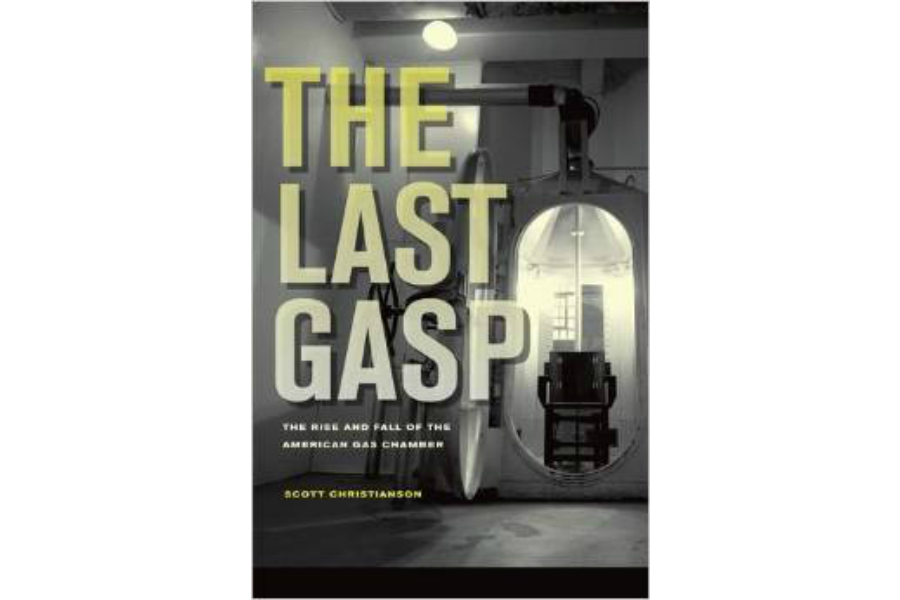Could the gas chamber return in the US?
Loading...
Many Americans know there’s a debate over lethal injection, but they may not realize that another execution method – the gas chamber – has vanished from death row.
Thanks to concern about horrific mishaps and pressure from federal judges, no state has put anyone to death by gas since 1999. But the gas chamber remains on the books as an execution method in California, Arizona, and Missouri, where the attorney general hinted in 2013 that the state could press deathly gas back into service amid a debate over lethal injection.
Two other states are on the list with an asterisk. Earlier this year, the governor of Oklahoma signed legislation allowing execution via nitrogen gas – not previously used in executions – if drugs for lethal injection are unavailable or the method is declared illegal. Wyoming has a similar policy in place, according to the Death Penalty Information Center.
For now, no Death Row inmate will breathe a last breath of poisonous gas. On June 29, the Supreme Court ruled in Oklahoma’s favor and allowed it to continue lethal injections. Massachusetts historian Scott Christianson, author of 2010’s The Last Gasp: The Rise and Fall of the American Gas Chamber, was disappointed but not defeated. A foe of capital punishment, he believes lethal injection belongs in the history books with deadly gas and every other tool of legalized execution.
In an interview, Christianson talks about the gas chamber’s surprising past, his thoughts about reducing harm in executions as they continue, and his expectations for the future.
“It’s folly to think that we can go ahead and claim that something is acceptable and effective and just start killing people,” he says, “and then years later determine it really is problematic.”
Q: Tell us a little bit about the history of the gas chamber, which you explore in your book. Who first developed it?
The United States invented the gas chamber, something that was developed by the military and really favored by certain chemical interests. It was used for decades to kill several hundred people here. But it was picked up by the Nazis, who drew upon the experiences of the US and used it to kill more than 1 million innocent prisoners during the Holocaust.
Q: How did the Nazi experience affect executions in the US?
It really hung over the capital punishment debate and became one of the reasons why California and other states retreated from the gas chamber and began to resort to lethal injection.
Q: The gas chamber faded away in the US thanks to the Nazi connection and concerns about executions that went terribly wrong. Why has deadly gas come back into the debate in states like Oklahoma?
There’s an assertion that they don’t necessarily need a gas chamber, that they could simply use a gas mask or a gas tent, some sort of very limited contraption to pump nitrogen gas into somebody who’s breathing in order to kill them.
In Oklahoma, they did a study that said this method won’t pose any kind of problems and not not require any kind of medical involvement. It what was said about lethal injection, the electric chair, and various other methods that have been abandoned because things haven’t turned out that way.
Q: What’s the connection between the debate over execution by gas and the one over euthanasia?
People have said gas will work well because it’s used by people who are committing suicide as part of the Right to Die movement.
In some countries, the rate of these suicide deaths is becoming very high. It’s irresponsible to put this method of execution out there and support it in this way that’s going to encourage its use outside of death row. It’s not simply a narrow issue of capital punishment.
Q: Many Americans believe that teens shouldn’t have sex, but they support educating them about how to protect themselves if they do. The idea is to reduce harm. Along these lines, does it make sense to identify the most humane method of execution and push for it? Capital punishment isn’t likely to disappear anytime soon, so shouldn’t its foes devote some effort to reducing its harm while it exists?
It’s folly to think that we can go ahead and claim that something is acceptable and effective and just start killing people and then years later determine it really is problematic.
Q: What do you think will happen next in light of the the Supreme Court’s ruling?
The people who argue for capital punishment have run out of reasons for it. They can’t claim that it serves as a deterrent, and they can’t claim it saves resources or money.
The whole system is problematic and expensive with so much litigation. There are so many other factors like people becoming more aware of wrongful convictions.
These will still plague the death apparatus regardless of what the court does. Gradually, capital punishment will end.
Randy Dotinga, a Monitor contributor, is president of the American Society of Journalists and Authors.







